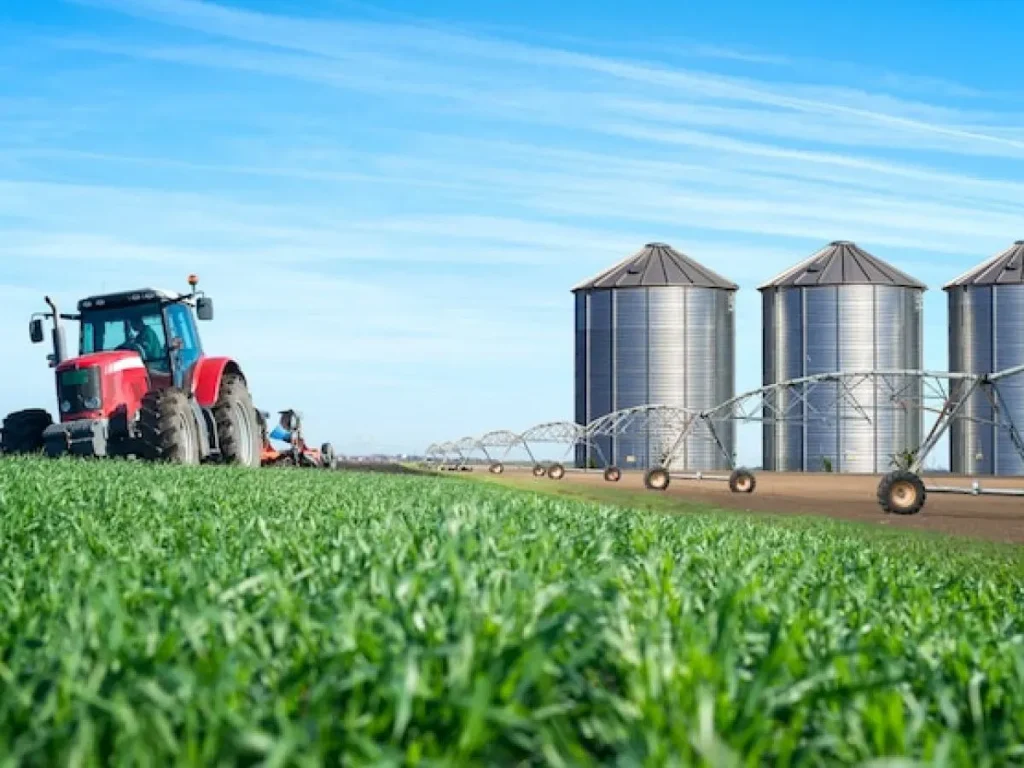Context:
The Union Cabinet has approved an expansion of the Central Sector Scheme for financing under the ‘Agriculture Infrastructure Fund’ (AIF) to make it more attractive, impactful, and inclusive.
Key Updates to the AIF Scheme:
- Viable Farming Assets: To allow all eligible beneficiaries of scheme for creation of infrastructure covered under ‘viable projects for building community farming assets. This is expected to improve farming productivity and sustainability.
- Integrated Processing Projects: The scheme will include funding for projects that handle both primary and secondary processing. However, standalone secondary processing projects will be funded through Ministry of Food Processing Industries (MoFPI) schemes.
- PM KUSUM Component-A: This component can now be combined with AIF for farmers, farmer groups, FPO, cooperatives, and local councils. This aims to support both clean energy solutions and agricultural infrastructure.
- NABSanrakshan: In addition to Credit Guarantee Fund Trust for Micro and Small Enterprises (CGTMSE), AIF credit guarantees will be extended to Farmer Producer Organizations (FPOs) through NABSanrakshan Trustee Company Pvt. Ltd., improving financial security and encouraging investment in agricultural projects.
Significance of the Expanded AIF Scheme:
- Its recent expansion aims to further boost productivity, increase farm incomes, and demonstrate the government’s commitment to sustainable agricultural infrastructure.
- The AIF scheme has created over 8.19 lakh jobs in rural areas, contributing to economic growth and agricultural development.
About Agricultural Infrastructure Fund (AIF)
It is a central sector scheme launched in 2020.
Participating Institutions:
- All scheduled commercial banks, cooperative banks, Regional Rural Banks (RRBs), Small Finance Banks, Non-Banking Financial Companies (NBFCs), and the National Cooperative Development Corporation (NCDC) can participate.
- They must sign a Memorandum of Understanding (MoU) with NABARD or the Department of Agriculture & Farmers Welfare (DA&FW). NABARD may provide refinancing support to eligible lenders.
Objectives:
- To provide medium to long-term debt financing for post-harvest management and community farming infrastructure.
- To improve agricultural infrastructure through incentives and financial support.
- Coverage: Projects include supply chain services (e-marketing, warehouses, silos, pack-houses), cold chain facilities, primary processing centers, organic input production, and smart agriculture infrastructure.
Key Features:
- Loans up to ₹2 crore will have a 3% annual interest subvention for up to 7 years.
- Borrowers must contribute at least 10% of the project cost.
- Up to 25 projects per entity can receive loans, each up to ₹2 crore.
- The scheme is open to multiple projects in one location, with a cap of ₹2 crore in total per location.
- Private entities have a limit of 25 projects; no such limit for state agencies, cooperatives, and similar organizations.
Duration:
- The scheme is operational from 2020-21 to 2032-33.
- Loan disbursement must be completed by the end of FY 2025-26.
Inclusivity:
- 24% of grants must be allocated to SC/ST entrepreneurs (16% for SC, 8% for ST).
- Priority will be given to women and other weaker segments to ensure inclusive benefits.
Exclusions:
- PSUs are directly not eligible under the scheme, but projects sponsored by them under PPP are eligible.

